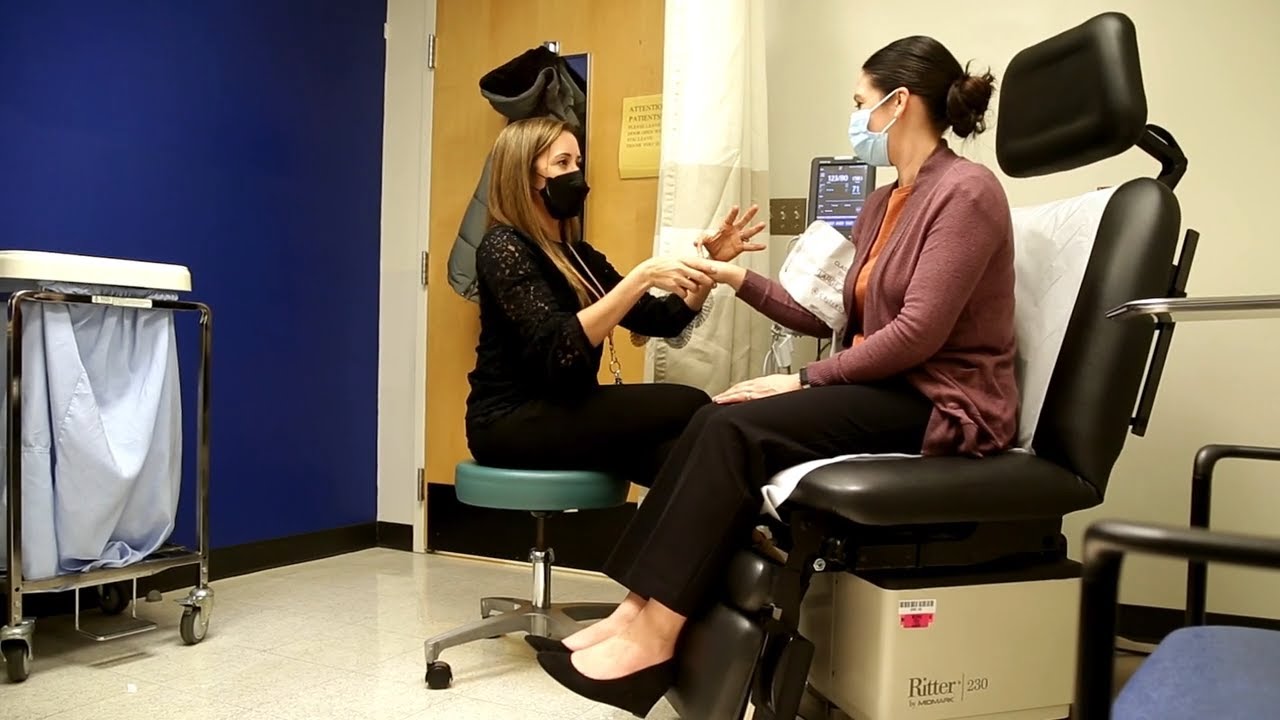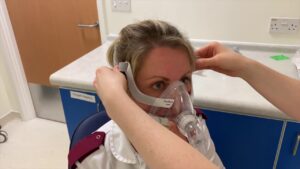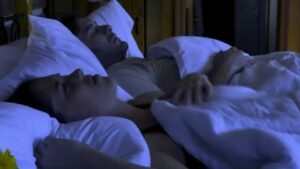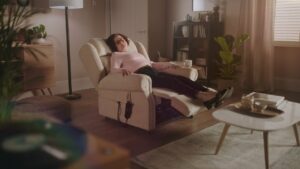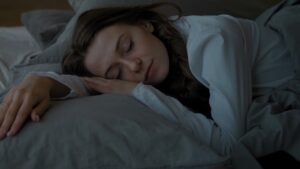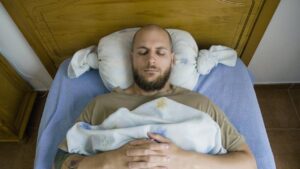Aside from COVID, other causes of post-COVID sleep problems can be stress, steroids, and lack of physical activity. However, these factors may not be the only culprits. Read on to find out more about the causes of COVID-induced sleep disturbances. There is a common misconception that COVID is directly related to daytime sleeplessness. While this is not entirely true, it is an important part of the overall COVID treatment plan.
COVID-induced sleep disturbances
Many people who have COVID experience sleep disturbances during the early and late stages of the illness. There are ways to manage these symptoms and improve your sleep quality. COVID appears to interfere with your immune system, which is a key reason for the occurrence of massive inflammation around the body. When the immune system is compromised, it cannot perform at its optimal level and therefore may interfere with sleep. Insufficient sleep can also interfere with your quality of life.
One of the most common forms of COVID-induced sleep disturbances is coronasomnia, which encompasses a constellation of sleep dysfunction symptoms, including disruption of sleep continuity, changes in the normal sleep-wake cycle, and decreased quality of rest. Coronasomnia is commonly linked to a phobia of a virus, psychosocial impact, and medical effects. It is also associated with a high incidence of insomnia and a heightened risk of cardiovascular disease.
While sleep disturbance in patients with acute COVID infection may be associated with hospitalization, it is also associated with poor quality of sleep. Patients with COVID-related respiratory illness should receive symptom relief as soon as possible, as the symptoms are often directly related to the duration of hospitalization. Patients should also receive psychological support and noise reduction, as these factors can negatively impact their quality of sleep. So, if you are a COVID patient, these changes in sleep can greatly impact your quality of life.
Stress
The COVID-19 pandemic has completely turned our world upside down. Millions of people have lost their jobs, experienced sickness, and experienced heightened anxiety. There’s also a lack of sleep owing to uncertainty about health, job security, and employment. Couple these stressors with a new virus and it’s easy to see why people are experiencing trouble sleeping. Thankfully, there are ways to solve the problem.
Long-term COVID patients can develop persistent sleep problems. These symptoms may be constant or appear in waves. Either way, they can interfere with your sleep. Some researchers think the ongoing inflammation in the body may play a role in these issues. The combination of chronic pain and stress can cause a variety of physical and mental health issues, including depression. As a result, it’s important to get enough sleep to recover fully.
Despite this, some experts believe COVID-19 has resulted in a new epidemic of insomnia. Insomnia is now known as Coronasomnia. Seventy percent of patients with post-covid sleep problems report problems with their sleep-wake cycle, mood, and behavior. Many of these complaints are caused by post-covid stress and the irrational use of steroidal drugs. Lack of sleep leads to irritability, low concentration, and problems remembering.
Steroids
Psychiatric side effects of steroids are also a potential consequence of COVID-19 infection. While the causes of these psychiatric manifestations are unknown, the association between steroids and psychiatric problems is important, particularly during the acute phase of the illness. In such cases, a psychiatrist should be consulted to assess the patient’s risk for psychiatric disorders related to steroids.
One case demonstrates that while steroids can help patients deal with the symptoms of COVID infection, they do not help those suffering from sleep disorders. The patient is still awakened by worries about his health and his future. Although he’s cured of the infection, France Singer’s sleep problems persist, despite the steroid treatment. She tried benzodiazepines, but they did not help her sleep. She also tried cognitive behavioral therapy and consulted a sleep coach.
A study from Montefiore Medical Center examined more than 1,800 patients with COVID-19, and found that about 140 of them received a steroid within two days of their diagnosis. The majority received prednisone, while one-fifth were treated with dexamethasone. Although the effects were largely positive, they were less effective for patients who did not have systemic inflammation.
Lack of activity
The prevalence of COVID-related lack of activity was significantly higher in COVID-19 patients than in the general population. This sleep problem was associated with higher age and male sex. Further studies are needed to determine the cause and effectiveness of COVID therapy. Lack of activity following COVID infection can have severe consequences. The following article will discuss COVID-related sleep problems in the COVID-19 population.
This condition can cause a number of psychological consequences, including difficulty falling asleep and staying asleep. The presence of delirium, a state of confusion and hallucinations, may make sleeping more difficult. Other symptoms of COVID can also interfere with sleep quality. During the COVID lockdown, 723 adults reported fewer physical activities compared to their average daily levels of activity. The results were similar when the same sample of people was examined in May.
Stress due to supply shortages
The impact of the COVID-19 pandemic has disrupted nearly every aspect of our lives. Millions of workers have been laid off or furloughed. Others have lost loved ones and suffered sickness. In an environment of uncertainty, people are left to worry about their health and employment, and where they’ll be able to pay their bills and care for their families. Social isolation is also a concern.
Cognitive behavioral therapy for insomnia
Cognitive behavioral therapy for post COVID insomnia is a proven method of treating chronic sleeplessness. In this treatment, trained providers work with patients to challenge and change their inaccurate thoughts. During the therapy, the patient often receives homework to practice new skills in between sessions. The goal of CBT for post COVID insomnia is to help patients learn to associate their bedroom with sleep, rather than wakefulness or frustration. This method is sometimes called stimulus control, and involves modifying the associations between a person’s bedroom and the state of sleep.
After a literature search, a narrative review of the research was conducted. The authors found a number of studies and articles related to the subject of COVID-19 insomnia. These studies focused on the severity of insomnia and risk factors associated with insomnia in a population of French citizens. The results were promising. A number of the patients who had been suffering from insomnia after the COVID-19 pandemic had experienced improvements following the treatment.
In addition to traditional medicines, cognitive behavioral therapy for post COVID insomnia can be done online. Cognitive behavioral therapy can be viewed as a first-line treatment for insomnia. In addition to medication, this therapy involves psychotherapy to address anxiety and depression. Most patients will experience results within three months of treatment. There is a high success rate for this treatment and it can help patients overcome insomnia and return to normal sleep patterns.
Melatonin
The current study of melatonin for COVID sleep problems was conducted with the goal of evaluating the effectiveness of the drug for patients suffering from disturbed sleep due to the COVID infection. The study is an open-label randomized controlled clinical trial. The primary endpoint was sleep quality. Secondary endpoints included blood oxygen saturation and peripheral capillary oxygenation. Melatonin has been shown to alleviate sleep problems in COVID patients and reduce the risk of adverse effects including delirium.
Although melatonin is best known for its role in regulating sleep, it has been proven to be crucial in calibrating the immune system, a vital part of the progression of COVID-19. When melatonin levels are low, the immune system’s self-protective response can go haywire and turn a mild case of COVID-19 into a life-threatening situation.
Although melatonin is safe for short-term use, it is important to talk with your doctor before taking any dietary supplements. While some studies have shown that melatonin is effective for COVID sleep problems, other studies have found that the supplement is not beneficial in this scenario. Despite the potential benefits of melatonin, further studies are needed to determine the optimal dosage for COVID patients.
RotoProne bed for COVID
If you’re suffering from respiratory failure, you may be considering buying a RotoProne bed for COVID and are unsure about whether or not this product is right for you. The purpose of this medical device is to provide improved blood flow and oxygenation for COVID patients by turning them from a backwards position to a prone position. However, prone positioning is not without risks, as it requires four or five people to safely turn the patient.
Manual proning methods require healthcare providers to manually lower and raise the patient, which increases the risk of extubation. Lift-assisted methods allow healthcare workers to mechanically lower patients and offer greater control over lines. Regardless of the type of prone positioning used, pressure injury is a potential risk. Although all prone positions present additional pressure injury risks, unlike other beds the RotoProne is designed to automatically place the patient in a prone position, improving right ventricular hemodynamics and oxygenation. Research shows that the bed significantly reduces 28-day mortality in patients with severe ARDS.
While lift-assisted techniques such as lifting straps or sheets are effective, they don’t eliminate the need for additional healthcare workers. This is because they require substantial pushing and lifting forces. The RotoProne bed has a weight limit of 159 kg, while slings and lifts can accommodate patients with heavier weights. Furthermore, manual methods have inherent limitations, including strength requirements of healthcare workers. Therefore, the lift assisted method appears to be the best option for patients with COVID.
By reducing the number of healthcare workers required for manual prone positioning, healthcare providers can significantly improve their workflow and decrease their COVID exposure. Manual techniques typically require five to seven healthcare workers to reposition a patient. Two healthcare workers are required on each side, although more may be necessary for patients with wider bodies. Additionally, one additional worker is needed to manage the airway and hold the head of the patient.
The patient’s survival rate is poor. Patients on COVID intubated with a ventilator have a 50% to 65% mortality rate. As a result, Chase was destined to die. The cytokine storm is a cascade of exaggerated immune responses. This is what kills COVID patients. Without the use of a RotoProne bed, he would have died on his way to recovery.
